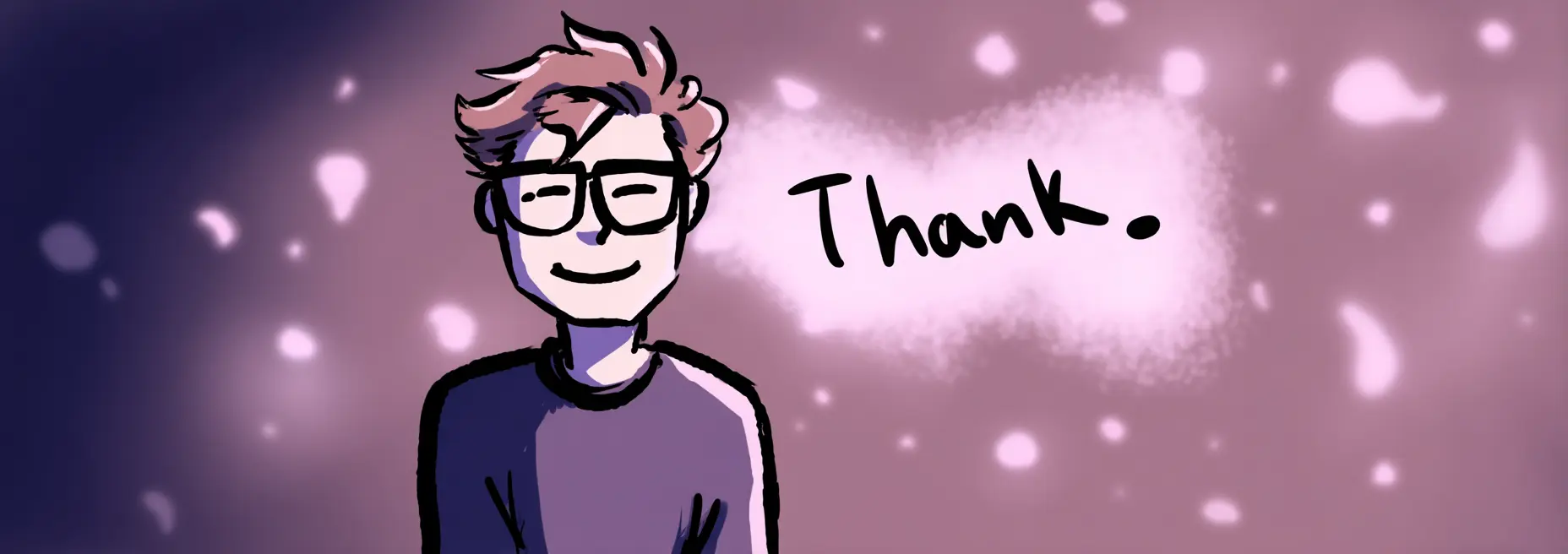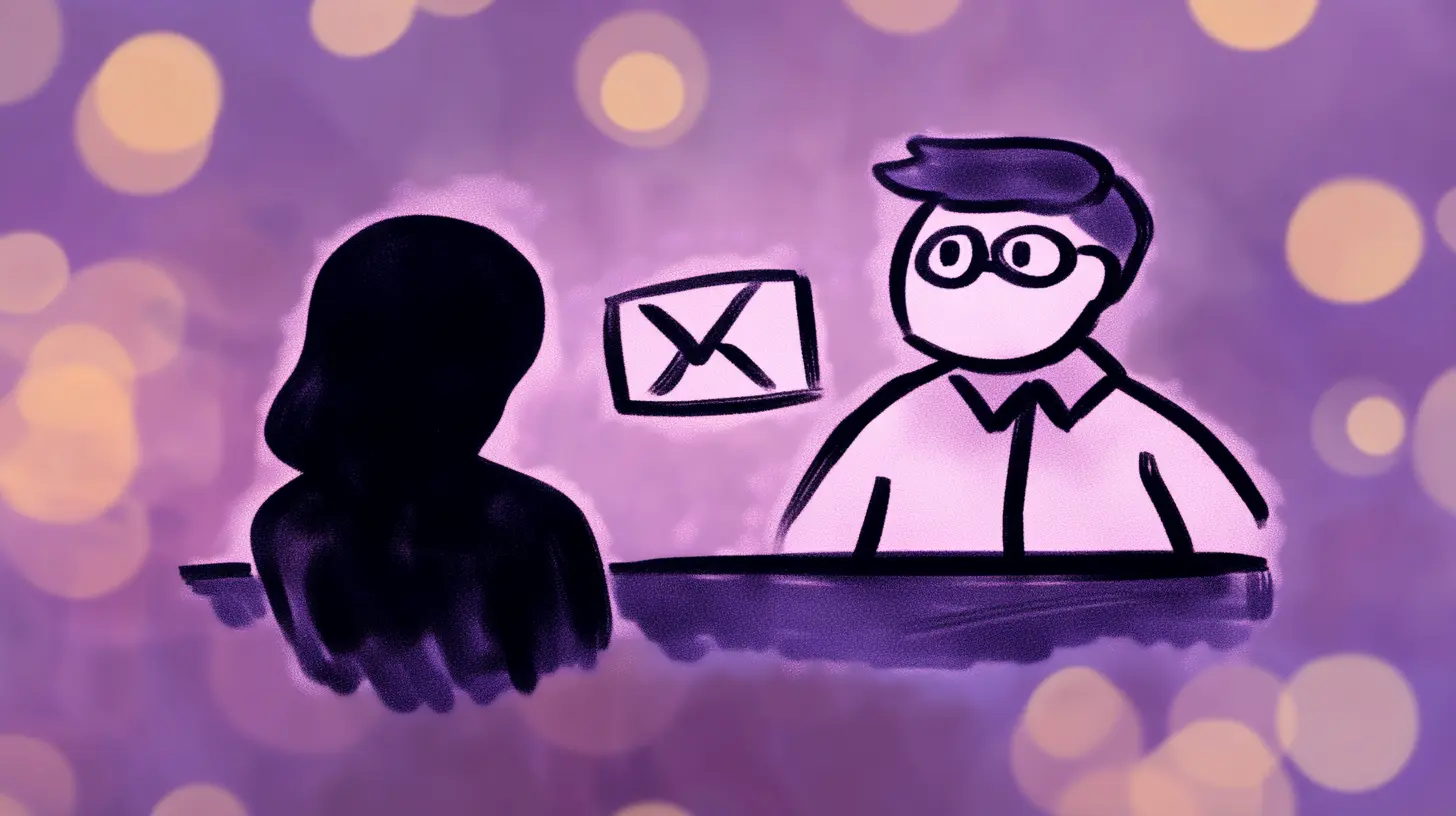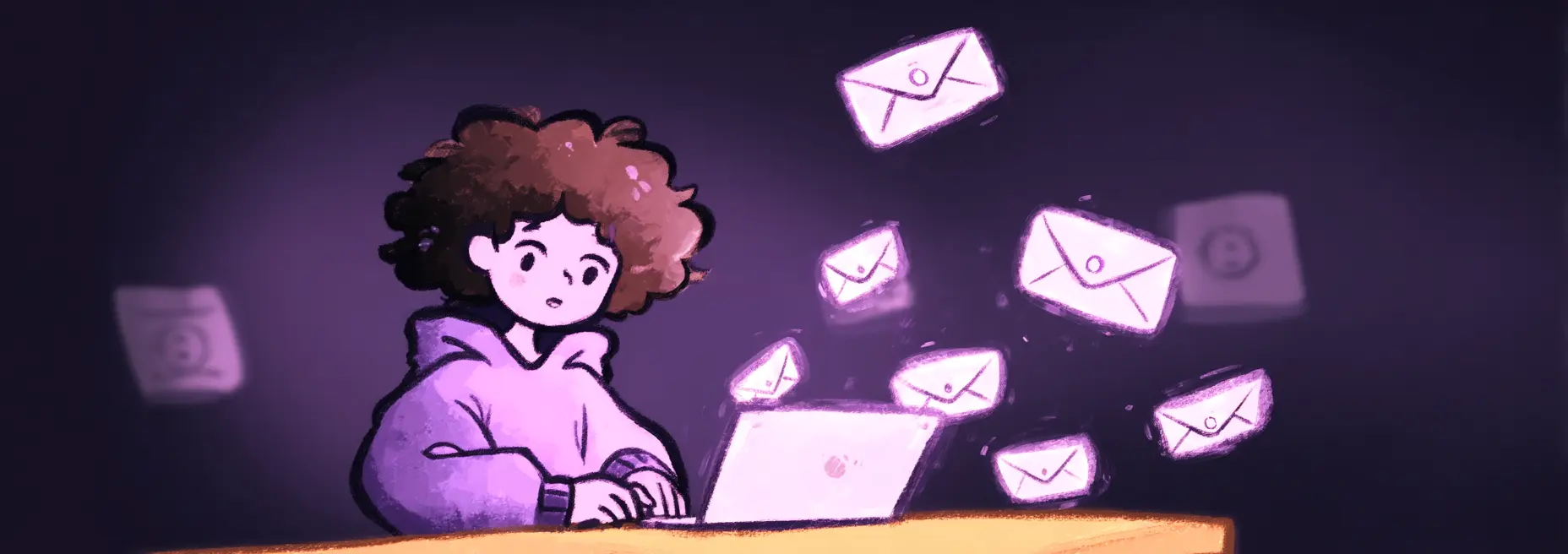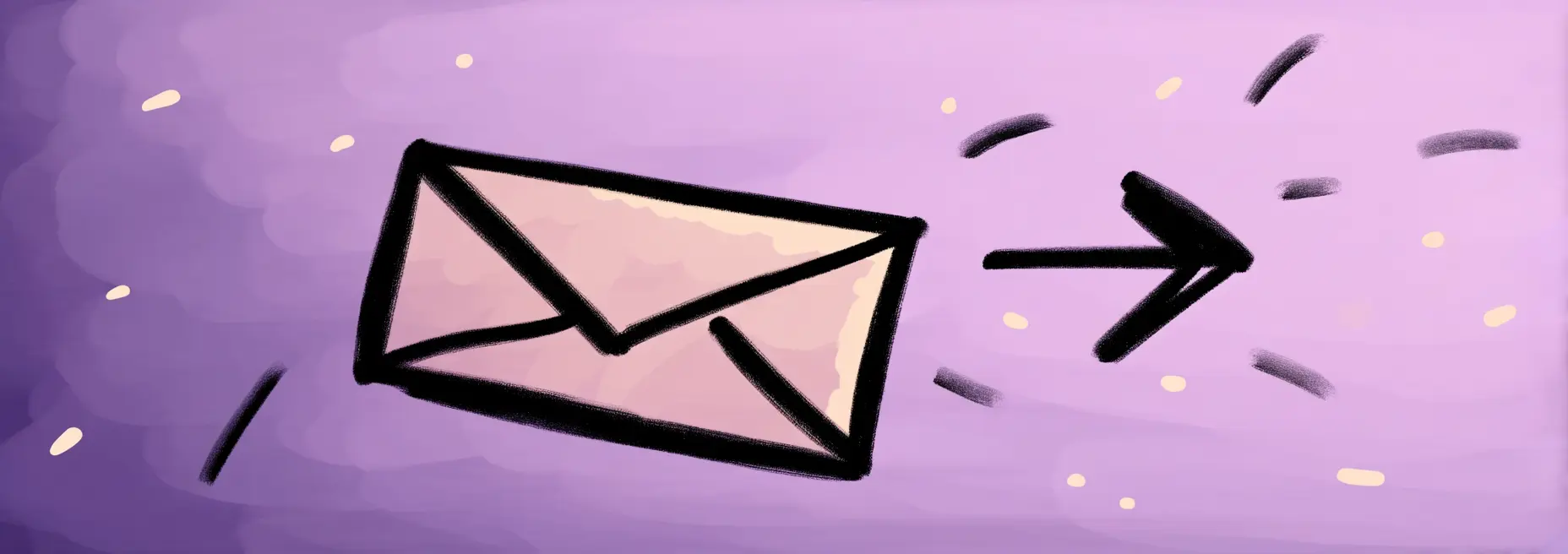Have you ever stared at a blank screen, trying to craft the perfect thank you email after a job interview, client meeting, or colleague’s help? You’re not alone. In a survey by Robert Half, 80% of hiring managers consider thank you notes important, yet only 24% of job applicants actually send them. This striking disconnect highlights how mastering the art of gratitude can immediately set you apart in any professional scenario.
I’ve spent years helping professionals navigate these communication challenges, and I’ve seen firsthand how a well-crafted thank you email can transform a professional relationship. Whether you’re following up after an interview, expressing appreciation to a mentor, or acknowledging a team member’s contribution, the right words can open doors and strengthen connections.
When you write a thank you email, you’re doing more than observing social etiquette—you’re strategically reinforcing your professional brand. In fact, a study by the Journal of Personality and Social Psychology found that expressing gratitude increases the likelihood that the recipient will continue helping you by 100%.
In this guide, I’ll share 20 customizable thank you email templates that you can adapt for virtually any professional situation you encounter. You’ll discover how to structure your message, what elements to include (and avoid), and the perfect timing to maximize impact. I’ve also included real-world examples that have generated positive responses across industries.
By the time you finish reading, you’ll have a complete toolkit of professional thank you emails at your fingertips, ready to deploy whenever you need to make a lasting impression. Let’s start with understanding why these messages matter so much and how to approach each specific scenario effectively.
The Psychology and Business Value of Thank You Emails
Have you ever received a heartfelt thank you note that instantly brightened your day? That warm feeling isn’t just pleasant—it’s psychologically powerful. When you send thoughtful thank you emails in professional settings, you’re tapping into something far more valuable than mere courtesy.
The Science of Gratitude in Professional Relationships
Research consistently shows that expressions of gratitude create significant psychological benefits for both the sender and recipient. In fact, studies indicate that thank you notes can increase recipient goodwill by up to 40%. When you take the time to express genuine appreciation, you’re activating the brain’s reward pathways, creating positive associations with you and your organization.
I’ve seen this play out countless times in my own professional relationships. When you consistently acknowledge others’ contributions through thoughtful thank you messages, you build what psychologists call “emotional capital”—a reservoir of goodwill that strengthens professional bonds and creates resilience during challenging times.
“Gratitude is not only the greatest of virtues but the parent of all others.” – Cicero
The ROI of Thank You Emails
Beyond the psychological benefits, thank you emails deliver tangible business value that directly impacts your bottom line:
- Client Retention: When you consistently express appreciation to clients, you increase retention rates by up to 30%. Remember that acquiring a new customer costs 5-25 times more than retaining an existing one.
- Referral Generation: Grateful clients are 3x more likely to refer others to your business. Your thank you email might be the catalyst that turns a satisfied customer into an active advocate.
- Relationship Depth: Regular expressions of gratitude create multiple touchpoints beyond transactional exchanges, deepening business relationships and opening doors to upselling opportunities.
- Team Performance: Internal thank you emails boost employee engagement. Studies show that employees who receive regular recognition are 14% more productive and have 31% lower voluntary turnover.
The beauty of thank you emails is their remarkable ROI—they cost virtually nothing to send but can generate significant returns in goodwill, loyalty, and future business opportunities.
Example of an Effective Thank You Email
Notice how this example goes beyond generic platitudes to reference specific contributions, explains why they were valuable, and opens the door to continued collaboration. This specificity is what transforms a forgettable “thanks” into a relationship-building tool.
When and Why to Send Professional Thank You Emails
Timing and context significantly impact the effectiveness of your thank you messages. Here are scenarios where I’ve found thank you emails make the most impact:
- Immediate Post-Interaction: Send within 24-48 hours after interviews, meetings, or significant exchanges while the interaction is still fresh.
- Milestone Acknowledgments: Recognize anniversary dates of client relationships, project completions, or significant achievements.
- Unexpected Assistance: When someone goes above and beyond without being asked, a prompt thank you reinforces this positive behavior.
- Before Making Requests: Expressing gratitude for past collaboration before requesting new assistance creates reciprocity.
- During Challenging Periods: Acknowledging someone’s patience or flexibility during difficult times strengthens relationships when they’re most vulnerable.
I recommend setting calendar reminders for recurring thank you opportunities to ensure you don’t miss these valuable touchpoints. The key is to make your timing feel natural rather than purely transactional.
Leveraging AI for Better Thank You Messages
One of the challenges with thank you emails is balancing authenticity with efficiency, especially when you need to send multiple personalized messages. This is where AI tools can provide significant value by:
- Identifying optimal timing: AI can analyze response patterns to determine when your thank you emails are most likely to be opened and appreciated.
- Personalizing at scale: Tools can help you maintain individual connection even when sending multiple thank you messages by suggesting personalized details based on your interaction history.
- Optimizing language: AI writing assistants can suggest variations in wording that maintain your authentic voice while maximizing emotional impact.
- Tracking effectiveness: Advanced tools can monitor which thank you messages generate the most positive responses, helping you refine your approach over time.
The most effective approach I’ve found is to use AI as a starting point while ensuring you add your personal touch. The goal isn’t to automate gratitude but to enhance your natural expression of appreciation with data-informed insights.
Remember that genuine thank you emails are about creating moments of human connection in our increasingly digital world. When you master the art of professional gratitude, you transform routine business interactions into relationship-building opportunities that compound in value over time.
Client Appreciation: Templates for Various Business Milestones
Expressing gratitude to clients isn’t just good manners—it’s smart business. When you take the time to acknowledge your clients’ support, you strengthen relationships and increase the likelihood of continued partnership. Let me show you how to craft thank you emails that make clients feel genuinely valued throughout different stages of your professional relationship.
Crafting Thank You Emails for New Client Acquisition
The beginning of any client relationship deserves special acknowledgment. When a new client signs a contract or makes their first purchase, you have a perfect opportunity to set the tone for your future partnership.
When crafting these initial thank you emails, I recommend you include:
- Specific appreciation for their business decision
- A brief reminder of the value they’ll receive
- Clear next steps and what they can expect
- Your direct contact information for questions
The key is making your new client feel confident in their decision to work with you. Acknowledge that you understand they had choices and express genuine appreciation that they selected your business.
Templates for Long-Term Client Anniversaries and Relationship Milestones
Client relationships that stand the test of time deserve recognition. Whether it’s a 1-year anniversary or a 10-year partnership, acknowledging these milestones shows your clients you don’t take their loyalty for granted.
Anniversary thank you email elements:
- Specific mention of the time period you’ve worked together
- Highlights of key accomplishments or projects
- Expression of how valuable the relationship has been
- Forward-looking statement about continued partnership
These emails work best when you customize them with specific details about your shared history. Avoid generic language like “valued client” and instead reference particular projects or interactions that demonstrate you truly know and appreciate their business.
Example: One-Year Client Anniversary Thank You Email
Post-Project Completion Thank You Emails
When you’ve successfully delivered a project, a thoughtful thank you email accomplishes two important goals: it expresses appreciation for the client’s business and it sets the stage for future collaboration.
For these emails, I suggest you include:
- Specific acknowledgment of the completed project
- Gratitude for their trust and collaboration
- A brief summary of outcomes or achievements
- An invitation for feedback
- A subtle opening for future work together
This type of thank you email serves as both a relationship-building tool and a soft business development opportunity. By expressing appreciation while highlighting the value you’ve delivered, you remind clients why they chose to work with you in the first place.
Using Data and Metrics to Personalize Client Thank You Messages
One of the most powerful ways to show clients you truly value them is to incorporate specific data points and metrics into your thank you messages. This approach demonstrates that you’re paying attention to the results you’re achieving together.
Effective metrics to include:
- Length of relationship: “In our 2 years working together…”
- Quantifiable results: “We’ve increased your website traffic by 45%…”
- Volume of work: “Across the 12 projects we’ve completed…”
- Growth metrics: “Your business with us has grown 28% year-over-year…”
When you include these specific details, you transform a standard thank you into a meaningful acknowledgment of your shared success. You’re not just thanking them for their business—you’re celebrating what you’ve accomplished together.
For long-term clients, consider creating a more substantial anniversary review that includes visual representations of your partnership milestones. A simple infographic or timeline can make your thank you message more memorable and impactful.
Timing Considerations for Client Thank You Emails
Timing matters when sending client appreciation emails. For maximum impact, I recommend you consider these timing guidelines:
- New client acquisition: Within 24 hours of contract signing or first purchase
- Project completion: Within 1-2 business days of deliverable acceptance
- Anniversaries: On or slightly before the actual date
- Unexpected appreciation: Random timing can actually increase perceived authenticity
Unexpected thank you emails—those not tied to any specific transaction or milestone—can be particularly effective. When you reach out simply to express appreciation without an obvious business reason, you demonstrate that you value the relationship beyond the transactions.
Remember that client appreciation shouldn’t be limited to email. For significant milestones or particularly valuable clients, consider supplementing your email with a handwritten note, small gift, or even a video message from your team. These multi-channel approaches show an extra level of care and attention that clients remember.
By developing a systematic approach to client thank you emails while maintaining genuine personalization, you’ll build stronger, longer-lasting business relationships that benefit both parties. Your thoughtfulness will set you apart from competitors who may take their clients for granted after winning their business.
Networking and Referral Thank You Templates
Let’s face it: networking often feels like planting seeds that may or may not grow. But I’ve found that a thoughtful thank you email can be the water and sunshine those professional connections need to flourish. Whether someone introduced you to a potential client or you connected with an industry leader at an event, showing appreciation isn’t just polite—it’s strategically smart.
After the Event: Keeping the Momentum Going
When you attend a networking event, the real work begins after you leave. I recommend sending a thank you email within 24-48 hours while your conversation is still fresh in both your minds.
Key elements to include in post-networking event thank you emails:
- Reference a specific topic you discussed (shows you were genuinely engaged)
- Mention something you learned from them (everyone loves to feel valued for their expertise)
- Include a clear next step or follow-up action
- Attach any resources you promised to share
Remember, your goal isn’t just to say thanks—it’s to maintain the momentum of your initial connection and lay groundwork for future interactions.
Acknowledging Professional Referrals
When someone puts their reputation on the line to refer you, they deserve special recognition. I’ve found that people who make referrals often wonder what happened after they connected you—so don’t leave them guessing!
For successful referrals:
- Express specific gratitude for the introduction
- Share positive outcomes or progress (they want to know their referral was valuable)
- Offer to reciprocate when appropriate
- Update them on next steps in the relationship
For unsuccessful referrals:
- Still express genuine appreciation for their effort
- Briefly explain the outcome without negativity
- Maintain enthusiasm about future possibilities
- Reinforce that you value their willingness to help
I’ve found that thanking someone even when a referral doesn’t pan out demonstrates professionalism and keeps the door open for future opportunities.
Example: Thank You Email for a Valuable Referral
Following Up After Informational Interviews
When someone gives you their time for an informational interview, they’re investing in your growth. Your thank you email should acknowledge this gift while also keeping the relationship moving forward.
Elements that make informational interview thank you emails effective:
- Highlight 2-3 specific insights you gained (shows you were actively listening)
- Connect their advice to actions you plan to take (demonstrates you value their guidance)
- Ask a focused follow-up question if appropriate (creates a reason for continued dialogue)
- Offer to share your progress in the future (sets the stage for ongoing communication)
I’ve noticed that the best informational interview thank you emails strike a balance between gratitude and forward momentum—you’re appreciative of the past conversation while also establishing grounds for future interaction.
Leveraging AI for More Effective Networking Communications
If you’re like me, you might struggle to find the right words that sound both professional and authentic in networking follow-ups. This is where AI tools can be particularly helpful.
By analyzing patterns in your previous successful networking emails, AI can help you identify:
- Timing patterns that resulted in higher response rates
- Language choices that resonated with different types of connections
- Follow-up sequences that led to stronger relationship development
- Personalization elements that made your messages stand out
For example, you might discover that emails sent on Tuesday mornings get better responses, or that mentioning a specific industry challenge leads to more engaging conversations.
I’ve found that the most valuable networking thank you emails don’t just close a loop—they open new ones. By analyzing what’s worked in your past communications, you can continuously refine your approach to building a network that genuinely supports your professional goals.
Remember that networking isn’t about collecting contacts; it’s about cultivating relationships. Each thank you email is an opportunity to deepen a connection that might become invaluable to both parties in the future. So take the time to craft messages that are authentic, specific, and forward-looking—your network will notice the difference.
Team Recognition: Internal Thank You Email Templates
In today’s fast-paced work environment, recognition often takes a backseat to deadlines and deliverables. Yet, when you take the time to acknowledge team members’ contributions through thoughtful thank you emails, you’re not just being polite—you’re actively building a culture of appreciation that drives engagement and performance.
Crafting meaningful thank you emails to team members
When you’re thanking colleagues, generic praise like “Great job!” or “Thanks for your help!” barely registers in their busy day. Instead, I recommend creating thank you messages that highlight specific contributions and their impact.
To craft a meaningful internal thank you email, you should:
- Be specific about the action you’re acknowledging
- Explain the positive impact of their contribution
- Connect their work to broader team or organizational goals
- Express genuine emotion rather than formulaic gratitude
- End with forward-looking encouragement that builds on this success
Templates for cross-departmental recognition
When you acknowledge colleagues from other departments, you’re not just thanking an individual—you’re building bridges across organizational silos. This type of recognition is particularly powerful because it highlights collaboration and demonstrates your understanding of how different functions contribute to shared goals.
For cross-departmental recognition, consider including these elements:
- Acknowledge how their expertise complements your team’s skills
- Highlight the challenges they helped overcome
- Recognize any extra effort they made outside their normal responsibilities
- Copy their manager (when appropriate) to ensure their contribution is formally recognized
- Suggest opportunities for future collaboration
Example of a detailed team recognition email:
Using thank you emails as part of a structured recognition program
When you implement thank you emails systematically rather than sporadically, you’ll see compounding benefits. According to Gallup research, regular recognition increases productivity by 14%, creating a substantial return on what is essentially a zero-cost investment.
To integrate thank you emails into your recognition strategy, I recommend:
- Setting a personal reminder to acknowledge team contributions weekly
- Creating templates for different types of recognition (project completion, going the extra mile, supporting a colleague)
- Establishing a “recognition rhythm” that ensures everyone receives appropriate acknowledgment
- Following up verbal praise with written recognition to create a lasting record
- Encouraging peer-to-peer thank you emails to distribute recognition responsibilities
“Recognition is not just about making people feel good—it’s about reinforcing the behaviors that drive organizational success.” – Adrian Gostick, co-author of “The Carrot Principle”
Leveraging WriteMail.ai’s style customization to match company culture
Every organization has its own communication style and cultural norms. When your thank you emails align with these norms while still conveying genuine appreciation, they’ll resonate more strongly with recipients.
If your company culture is formal, you might need more structured recognition. If it’s casual, an overly formal email might actually undermine your sincerity. WriteMail.ai offers style customization that helps you match your company’s tone while maintaining the core elements of effective recognition.
When adapting your thank you emails to individual communication preferences, consider:
- Whether the recipient prefers public or private recognition
- Their communication style (direct and concise vs. detailed and expressive)
- Cultural backgrounds that might influence how recognition is received
- Previous positive interactions that suggest what style resonates best
- The appropriate level of formality based on your relationship
Remember, the most impactful thank you emails feel personal rather than automated. Even when using templates or AI assistance, take time to customize the message so it speaks directly to the recipient’s specific contribution and your authentic appreciation.
By making team recognition a consistent practice through thoughtful thank you emails, you’ll not only boost morale in the moment but also build a foundation of trust and engagement that drives long-term performance. When recognition becomes part of your team’s cultural DNA, you’ll see improved retention, increased discretionary effort, and stronger relationships across your organization.
Thank You Emails for Assistance, Mentorship, and Professional Development
Expressing gratitude to those who’ve guided your professional journey isn’t just polite—it’s a powerful relationship-building tool. When someone invests their time and expertise in your growth, a thoughtful thank you email demonstrates that you value their contribution and strengthens your professional connection. Let me show you how to craft these important messages.
Templates for Thanking Mentors and Advisors
When someone has taken you under their wing, your appreciation should acknowledge specific guidance they’ve provided. Generic “thanks for everything” messages don’t have the same impact as emails that highlight particular insights or actions that made a difference to you.
When thanking mentors or advisors, you’ll want to:
- Be specific about their impact: Reference particular advice, introductions, or opportunities they provided
- Share outcomes: If their guidance led to a positive result, share that success
- Look forward: Indicate how you’ll apply their wisdom going forward
- Offer reciprocity: When appropriate, ask how you might support them in return
Crafting Thank You Emails After Professional Development Opportunities
Whether you’ve attended a workshop, completed a training program, or been sponsored for a conference, acknowledging these growth opportunities shows professionalism and increases your chances of receiving similar support in the future.
For professional development thank you emails, I recommend you include:
- Key takeaways: Highlight specific skills or knowledge you gained
- Implementation plans: Explain how you’ll apply what you learned
- Business impact: Connect your new skills to organizational benefits
- Gratitude for the investment: Acknowledge the time or financial resources dedicated to your growth
Example: Thank You Email Following Mentorship
How to Express Gratitude for Assistance Without Seeming Overly Indebted
There’s a delicate balance to strike when thanking someone for professional help. You want to convey genuine appreciation without positioning yourself as perpetually indebted, which can create an uncomfortable power dynamic.
To express appropriate gratitude, you should:
- Keep it professional: Even when deeply grateful, maintain a collegial tone
- Be proportional: Match your level of thanks to the assistance provided
- Position the help as collaboration: Frame the assistance as professional cooperation rather than a one-sided favor
- Offer reciprocity: When appropriate, mention your willingness to assist them in the future
I’ve found that phrases like “I appreciate your professional support” or “your expertise was valuable” convey gratitude without positioning yourself as subordinate. Remember, in professional relationships, mutual support is expected and healthy.
Follow-up Strategies to Strengthen Professional Relationships
A thank you email shouldn’t be the end of a professional relationship—it should strengthen it. The most effective appreciation messages open doors to continued connection rather than closing chapters.
Consider these follow-up approaches to maintain momentum after sending your thank you:
- Schedule periodic check-ins: Set calendar reminders to touch base with mentors or advisors quarterly
- Share your progress: When you implement advice or reach milestones related to their guidance, send a brief update
- Find opportunities to connect: Forward relevant articles or event invitations that align with their interests
- Create value exchanges: Look for ways to provide assistance or insights valuable to them
I recommend concluding your thank you emails with a specific next step or future-oriented statement. For example: “I’d welcome the opportunity to share how the project develops” or “Perhaps we could connect again when the quarterly results are published.”
“Gratitude makes sense of our past, brings peace for today, and creates a vision for tomorrow.” – Melody Beattie
This forward-looking approach transforms your thank you from a transaction completion into a relationship continuation. By implementing these strategies, you’ll build a network of meaningful professional relationships founded on genuine appreciation and mutual growth.
Advanced Techniques: Customization and Optimization of Thank You Templates
Once you’ve mastered the basics of thank you emails, it’s time to elevate your approach. I’ve found that the most effective thank you emails aren’t just sent—they’re strategically crafted and continuously refined. Let me walk you through some advanced techniques that will help you maximize the impact of your appreciation messages.
The Science of A/B Testing Your Thank You Emails
If you’re sending thank you emails regularly (like after client meetings or as part of your networking strategy), you should consider implementing A/B testing to optimize your approach. Research shows that personalized subject lines increase open rates by 26%—a significant advantage when you’re trying to stand out in a crowded inbox.
Here’s how you can implement simple A/B testing for your thank you emails:
- Subject line variations: Test different levels of personalization, question formats vs. statements, or including the recipient’s name
- Email length: Compare response rates between concise (2-3 paragraphs) and more detailed thank you messages
- Call-to-action placement: Test whether placing your follow-up request early or late in the email affects response rates
- Greeting styles: Compare formal openings with more casual approaches based on your industry
When I work with clients on optimizing their thank you email strategy, I recommend tracking at least three metrics: open rates, response rates, and the quality of responses (did they lead to further engagement?). This data-driven approach transforms thank you emails from a courtesy into a strategic business tool.
Cross-Cultural Considerations for Global Business
If you work in an international context, you need to be particularly mindful of how gratitude is expressed across cultures. What sounds appropriately appreciative in one culture might come across as either excessive or insufficient in another.
When adapting your thank you templates for international recipients, consider these factors:
- Formality spectrum: Many Asian and European business cultures prefer more formal communication than is typical in North American contexts
- Directness vs. indirectness: Some cultures value getting straight to the point, while others appreciate contextual communication
- Timing sensitivities: In some cultures, an immediate thank you is expected; in others, a more thoughtful, delayed response might be appreciated
- Reference to hierarchy: In more hierarchical business cultures, acknowledging organizational position may be important
I recommend creating cultural variant templates for regions you frequently communicate with. This attention to cultural nuance demonstrates respect that goes beyond your words of thanks.
Before and After: Transforming a Basic Template into a Customized Message
The above example is functional but generic. Now let’s see how strategic customization transforms its effectiveness:
The improvements in the second version include:
- Specific subject line mentioning both the value received and using the recipient’s first name
- Acknowledging the exact time investment the person made
- Referencing specific advice and how it’s already being implemented
- Including a clear, low-pressure next step that continues the relationship
- More appropriate greeting based on relationship context
- Signature that provides multiple contact options
Using Analytics to Drive Continuous Improvement
The most sophisticated email communicators I know treat their thank you emails as evolving assets rather than static templates. You can use AI tools to analyze patterns in your most successful appreciation messages and identify what elements correlate with positive outcomes.
When analyzing your thank you email performance, look for these patterns:
- Response triggers: Identify what specific phrases or questions consistently generate replies
- Optimal timing: Determine if thank you emails sent within certain timeframes perform better
- Content patterns: Analyze whether certain topics or references in your thank you emails lead to stronger relationship development
- Length sweet spot: Find the ideal word count that balances thoroughness with respect for the recipient’s time
I recommend reviewing your thank you email performance quarterly if you send them regularly. This rhythm allows you to incorporate learnings while maintaining consistent improvement.
Support for Non-Native English Speakers
If English isn’t your first language, crafting nuanced thank you emails with the right tone can be particularly challenging. WriteMail.ai’s multilingual support and tone customization features can be invaluable tools in this situation.
The most common challenges I see for non-native speakers in thank you emails include:
- Finding the right balance between formality and warmth
- Using idioms and expressions appropriately
- Conveying genuine appreciation without sounding either too effusive or too reserved
- Structuring follow-up requests in culturally appropriate ways
AI tools can help you navigate these nuances by suggesting phrasing alternatives that match both your intended meaning and the appropriate professional context. You can also use these tools to check that your level of formality aligns with industry expectations and relationship stage.
“The language of gratitude is perhaps the most critical professional communication skill—it transcends cultures while requiring the most cultural sensitivity.” — International Business Communication Quarterly
By approaching your thank you emails with this level of strategic consideration, you transform what could be a routine courtesy into a powerful relationship-building tool. Remember that the goal isn’t perfection but progress—each thank you email you send is an opportunity to refine your approach and strengthen your professional connections.
Bringing It All Together: Making Thank You Emails Work for You
Throughout this article, I’ve shared various templates and strategies to help you craft effective thank you emails for different professional scenarios. Now, let’s take a moment to reflect on why these matter and how you can put them into practice.
When you take the time to send a thoughtful thank you email, you’re not just being polite—you’re making a strategic investment in your professional relationships. Remember that expressing gratitude increases recipient goodwill by up to 40%, and regular recognition can boost productivity by 14%. These aren’t just feel-good statistics; they translate to tangible benefits in your career and business growth.
Here are the key principles to remember when crafting your thank you emails:
- Personalization is non-negotiable—reference specific conversations, achievements, or contributions
- Timing matters—send your thank you emails promptly when the impact will be greatest
- Be genuine—formulaic thank you messages can sometimes be worse than none at all
- Include forward-looking elements that sustain the relationship beyond the immediate gratitude
- Match your tone and style to both the recipient and the situation
My final tip for you is something I’ve learned after years of professional communication: the most effective thank you emails are those that make the recipient feel both seen and valued. When you write your next thank you email, take a moment to consider not just what the person did, but why it mattered to you specifically. This level of reflection creates messages that resonate deeply and build lasting connections.
If you find yourself struggling to craft these personalized messages efficiently, tools like WriteMail.ai can help you generate well-structured thank you emails that maintain your authentic voice while saving precious time.
I encourage you to start implementing these thank you email techniques this week. Choose just one scenario—perhaps thanking a colleague who recently helped you or following up after a networking event—and see how a thoughtfully crafted thank you message can strengthen that relationship.
Remember, in our increasingly digital world, taking the time to express genuine appreciation is a differentiator that sets you apart. Your thank you emails aren’t just good manners; they’re powerful tools that build your professional reputation and create opportunities for meaningful connection.
Here’s to more meaningful professional relationships—one thank you email at a time!










